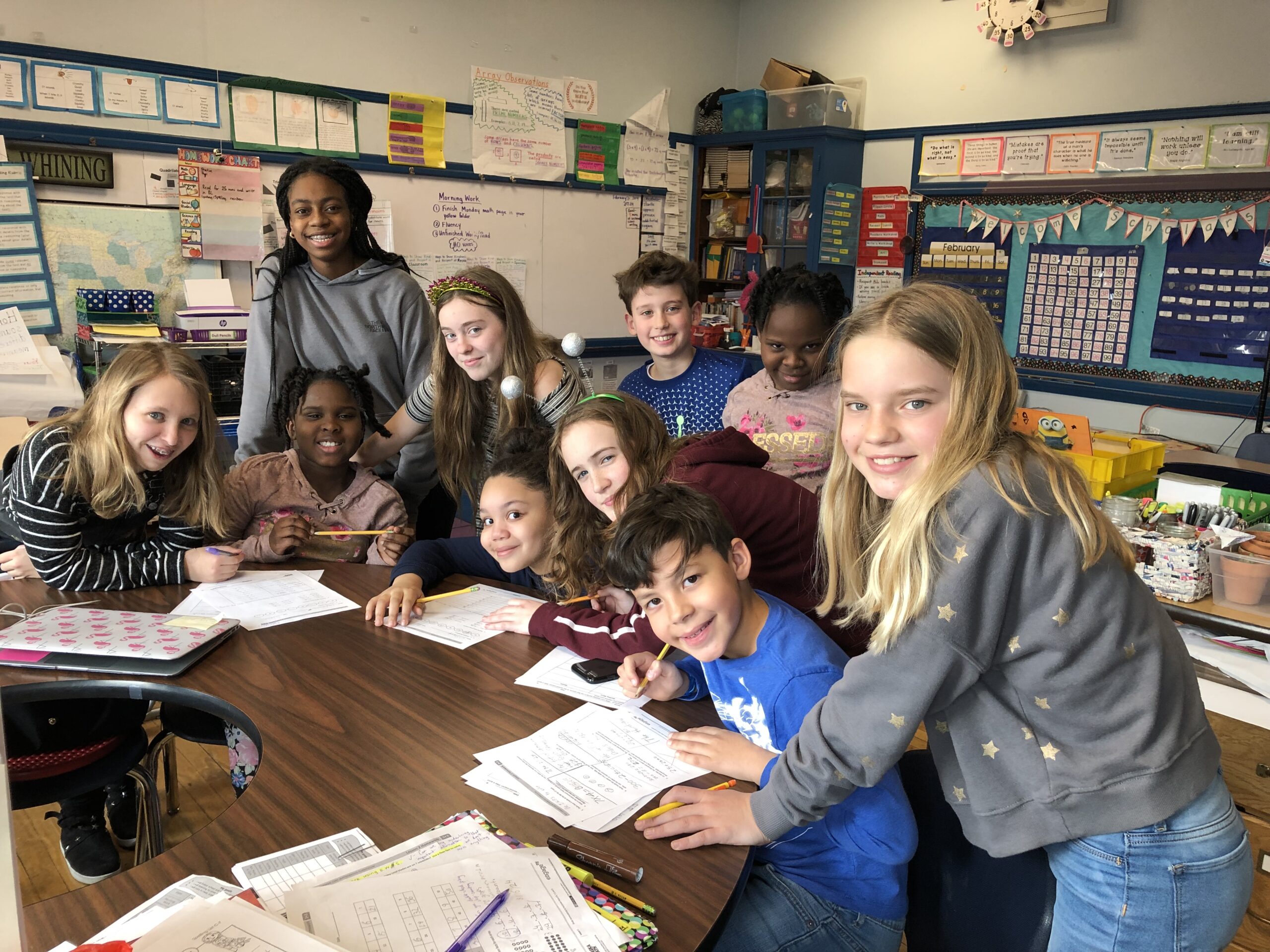Two years ago, I had the privilege of visiting Social Justice Humanitas Academy as part of the 2017 Teacher-Powered Schools National Conference. I was inspired not only by the SJHA team, but especially by their students who spoke so highly and eloquently about their high school experiences.
In asking a lot of questions, I learned that students had leadership roles that allowed them to take ownership of their school in many ways. Students at SJHA are on hiring teams. Students, like teachers, are decision-makers and stakeholders in successfully running their school.
I returned to Boston wanting to try this out. Immediately, I wrote a proposal to get students involved in the hiring process by including a couple of student representatives on Lead Teacher hiring teams. In the past, we’ve invited top candidates for all open positions to do guest lessons. Following guest lessons, we’ve always solicited student feedback. But we hadn’t considered incorporating students into our hiring process.
My proposal was met with support by many faculty members, but was ultimately voted down. When something is voted down at my school, the person or people voting it down need to share why they disagree. The concerns with my proposal were around how we could expect students to attend all of the Lead Teacher hiring team meetings and how to ensure that the work being done on the teams remained confidential, especially when involving internal candidates.
With these new perspectives in mind, I revised the proposal. Instead of adding student representatives to Lead Teacher hiring teams, I proposed adding a student panel to the hiring process. This would give student representatives a chance to gather questions from peers and pose those questions to candidates, and provide written input to the Lead Teacher hiring team.

In a traditional school, there would be layers of administration to navigate in order to get a decision like changing the hiring process made. In a teacher-powered school, it makes sense to include students in these types of conversations and decisions. The revised proposal was unanimously approved by our faculty and then our Governing Board.
In my school, Boston Teachers Union School, we believe that those closest to students should be calling the shots. Hence, teachers don’t only provide excellent instruction to students, but also make all of the decisions in running our school. Students, though, perhaps even more than teachers, are the real experts in teaching and learning. Incorporating their voices into the decisions being made seems like an essential component in increasing student engagement and, therefore, success—within our school and beyond.
School culture and climate
This year, we wanted to try something new. One of the four committees that runs our school, the School Culture and Climate Committee (SCCC), decided to invite students to join the committee. It was announced to middle schoolers at an assembly in the beginning of the year. Students who were interested completed a short application asking about why they wanted to join and what skills, qualities, and interests they would bring to the committee. The SCCC co-chairs chose two students based on their applications.
Our student members have attended a few meetings so far and already are making a big dent in SCCC’s work. In one November meeting, they worked with teachers to expand our middle school Scholar of the Month program to be a full, K-8 initiative which was kicked off in January. In our most recent meeting, they looked at school-wide behavioral health data side-by-side with faculty members and helped think through school-wide initiatives that could build on students’ strengths and support in areas where there are currently gaps. Our student members are taking part in finalizing our school-wide crisis plan and training staff in managing a behavioral health crisis.
On top of participating in the strategic meetings happening with SCCC, our student representatives also bridge the gap between our committee and our Student Council, helping to move the initiatives we discuss into action. SCCC’s student representatives, along with their fellow Student Council members, discussed, planned, set up, and ran an upper school dance and then gathered feedback from their peers afterward to see what worked well and what could be done better the next time. They’ve chosen, sent out flyers, and made posters announcing whole-school theme days. They selected themes and criteria for our K-8 Scholar of the Month program. They have also started and staffed an after-school peer tutoring program for lower schoolers that meets twice each week.
Though this work is relatively new for us, I’m already impressed by the new perspectives being shared in SCCC conversations. My prediction is that the more we integrate student voice into the decisions we make for our school, the more we’ll see an increase in student buy-in, motivation, and success.
Our school benefits by having policies and practices in place that best suit the strengths and needs of students, as communicated by the students. It has been a valuable learning experience for our SCCC and Student Council members to see their ideas taken seriously and to see the amount of work it takes to make them a reality. Incorporating more opportunities for student voice within our school has changed the relationship between teachers and their students from a top-down model to a partnership for a better school community.
When students are given opportunities in school to practice collaborative leadership both with peers and with teachers, we’re ensuring that they leave for high school prepared with the skill set and the experiences to be successful change-makers in their future schools and communities.
Taryn Snyder is a third-grade teacher at the Boston Teachers Union Pilot School in Boston, Massachusetts. Read more about Taryn and other teacher-powered ambassadors here.
 NEWSLETTER SIGN-UP
NEWSLETTER SIGN-UP



